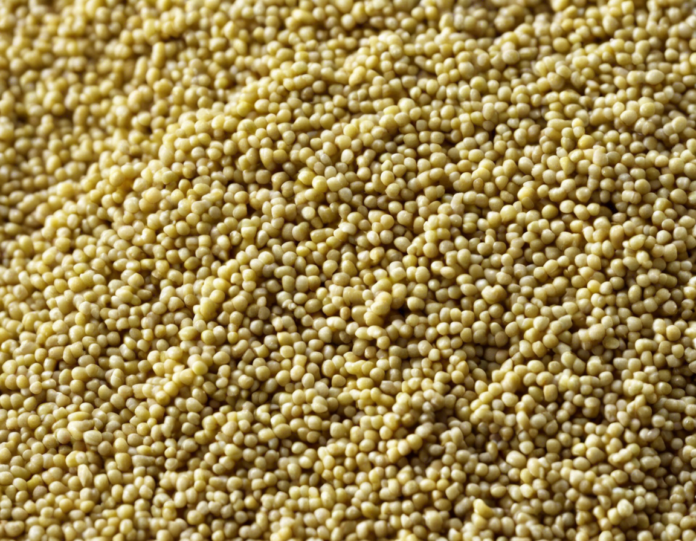Foxtail millet (Setaria italica) is a lesser-known but highly nutritious ancient grain that has been gaining popularity in recent years due to its various health benefits. Originating in China, India, and Africa, foxtail millet has been a staple in many diets for thousands of years. With its rich nutrient profile and versatility, foxtail millet is a great addition to a balanced diet. In this article, we will delve into the health benefits of foxtail millet and explore why you should consider incorporating it into your meal plans.
Nutrient Profile
Foxtail millet is a rich source of carbohydrates, dietary fiber, protein, and essential micronutrients. It is gluten-free, making it a great alternative for individuals with gluten sensitivities or celiac disease. Additionally, foxtail millet is low in fat and contains various vitamins and minerals, including magnesium, iron, phosphorus, and B vitamins such as niacin and thiamine.
Rich in Antioxidants
Antioxidants are compounds that help neutralize harmful free radicals in the body, protecting cells from damage and reducing the risk of chronic diseases. Foxtail millet contains polyphenols and lignans, two types of antioxidants that have been linked to improved heart health, reduced inflammation, and lower risk of certain cancers.
Promotes Digestive Health
The high fiber content of foxtail millet is beneficial for digestive health. Fiber helps promote regular bowel movements, prevents constipation, and supports a healthy gut microbiome. Including foxtail millet in your diet can help maintain a healthy digestive system and reduce the risk of digestive disorders such as constipation and colorectal cancer.
Regulates Blood Sugar Levels
For individuals with diabetes or prediabetes, foxtail millet can be a valuable addition to their diet. The complex carbohydrates and dietary fiber in foxtail millet are digested slowly, leading to a gradual release of glucose into the bloodstream. This helps prevent spikes in blood sugar levels and improves insulin sensitivity, making it a suitable grain choice for blood sugar management.
Supports Weight Management
Due to its high fiber content and low glycemic index, foxtail millet can help promote feelings of fullness and reduce overall calorie intake. Including foxtail millet in meals can aid in weight management and weight loss efforts. Additionally, the nutrient density of foxtail millet ensures that you are getting essential nutrients while managing your calorie intake.
Versatile Culinary Ingredient
Foxtail millet is a versatile ingredient that can be used in various dishes, including porridges, salads, stir-fries, soups, and baked goods. Its mildly nutty flavor pairs well with both sweet and savory recipes, making it a versatile grain option for cooking. By incorporating foxtail millet into your meals, you can enjoy its nutritional benefits without compromising on taste.
How to Prepare Foxtail Millet
Cooking foxtail millet is simple and similar to cooking other grains such as rice or quinoa. To prepare foxtail millet, rinse it thoroughly under running water to remove any debris. Then, combine one part foxtail millet with two to three parts water or broth in a saucepan. Bring the mixture to a boil, reduce the heat, cover, and simmer for about 15-20 minutes or until the millet is tender and the liquid is absorbed. Fluff the cooked millet with a fork before serving.
FAQs (Frequently Asked Questions)
- Is foxtail millet gluten-free?
-
Yes, foxtail millet is gluten-free, making it a suitable grain option for individuals with gluten sensitivities or celiac disease.
-
How does foxtail millet compare to other grains in terms of nutrition?
-
Foxtail millet is comparable to other grains in terms of macronutrients but stands out for its micronutrient profile, including high levels of magnesium, phosphorus, and B vitamins.
-
Can foxtail millet help with weight loss?
-
Yes, foxtail millet, with its high fiber content and low glycemic index, can aid in weight loss efforts by promoting feelings of fullness and reducing overall calorie intake.
-
Are there any potential allergens in foxtail millet?
-
Foxtail millet is not a common allergen; however, individuals with sensitivities to millet or other grains should exercise caution.
-
How can I incorporate foxtail millet into my diet?
- Foxtail millet can be used in a variety of dishes, including porridges, salads, stir-fries, soups, and baked goods. It can replace rice or quinoa in many recipes.
In conclusion, foxtail millet is a highly nutritious grain that offers a range of health benefits, including improved digestive health, regulation of blood sugar levels, and support for weight management. With its rich nutrient profile, antioxidants, and versatility in cooking, foxtail millet is a valuable addition to a balanced diet. Consider incorporating foxtail millet into your meal plans to reap the health benefits of this ancient grain.












